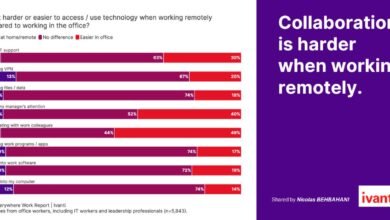
By | Regina Thomas
Data breaches are a major threat to organizations of all sizes today. Experiencing a data breach can cause you to lose valuable information, affect employees’ productivity, and damage your company’s reputation. Fortunately, business owners can protect themselves from these expensive catastrophes. Here are seven tactics you can implement to prevent data breaches in your firm.
1. Create Inventories And Backup Sensitive Data
You should keep an inventory of all your important data. It is also important to update this catalog regularly to know where you have stored all your data. Additionally, keep more than one copy of this data in an external storage device. Computer theft is one of the risk factors for data breaches and loss. For this reason, ensure that you store the data backup in a safe site away from your office.
2. Train Your Employees
A significant percentage of data breaches occur due to human error. For example, an employee can accidentally leak sensitive data or create an email that allows hackers to access your network.
This is why you should help your employees understand data security practices and how to follow them. These include using strong passwords and not sharing them with anyone. Your employees should also learn how to use multi-factor authentication to increase password login security. The training should also include common Cybersecurity threats and the best way to avoid them.
3. Install Antivirus and Firewall
Viruses are major security threats in an organization. One of your subordinates may accidentally install them in your network, making your firm vulnerable to a data breach.
You can protect yourself from such a situation by installing a firewall and antivirus. Ensure that the software you choose is large enough to handle your data and match your firm’s requirements. Additionally, maintain the antivirus properly and keep it updated.
4. Limit Access To Valuable Data
Traditionally, every employee could access company files on their computers. However, this increased the risk of hacks and data loss. Today, organizations only allow authorized employees to handle sensitive data or documents.
This has helped to ensure PCI DSS Compliance in Australia by limiting the number of workers who have access to customer payment information. Ensure you consider the employee’s role and needs before allowing them to view or handle such sensitive data.
For example, a mail delivery person does not need to access customers’ financial information. Additionally, partition records and create policies to regulate data access levels. Additionally, establish security protocols outlining what one should do in case a data breach occurs. You should also create hierarchies and assign different tasks to different individuals.
5. Update Your Software
Another effective way to protect your firm against a data breach is to update all your software regularly. Today, hackers and cybercriminals are using neural networks, computer mesh topologies, and artificial intelligence to take advantage of various vulnerabilities, such as security flaws.
Any unpatched software and program increase the risk of data loss. For this reason, install patches and regular updates to protect your data and operating systems from hackers. Moreover, remind your employees to download and install system updates on their phones and computers immediately after they become available.
6. Design And Implement An Effective BYOD Policy
The “bring your own device” policy allows employees to use their mobile phones, tablets, and computers at work. This strategy helps to save money and motivates the workers to be more productive. However, it also increases the risk of a data breach.
This is because hackers can take advantage of unsecured endpoints to access your network. Additionally, sensitive data can land in the wrong hands when employees share or lose their devices.
The best way to combat this threat is to separate organizational data from personal information. You should also implement data security procedures to ensure that your workers are retrieving and handling company data safely.
7. Monitor Your Remote Employees
The adoption of remote working has increased the need to monitor employees. Install software that tracks remote employees and detects when they mishandle sensitive data. This software should also alert the security personnel whenever an attempted intrusion occurs.
Conclusion
Preventing a data breach from taking place is better than trying to mitigate the after-damage and recover the lost data. Implementing the above strategies will protect your company data and files from unauthorized access.






